Creation of Hometown Forests
Creation of Hometown Forests
We have carried out the “Creation of a Hometown Forest” projects at our steelworks and factories in Japan under the guidance of the late Dr. Akira Miyawaki, director of the Japanese Center for International Studies in Ecology (professor emeritus at Yokohama National University), with the aim of harmonious coexistence between nature and humans. This project seeks to research the natural vegetation inherent to a certain area, carefully select suitable trees, grow their saplings in pots, and have them planted in developed grounds by both local residents and our employees. This was the first project by a private company in Japan to create a forest that harmonizes with the local scene and is based on an ecological approach. This is one way we try to raise the awareness of our employees regarding the environment.
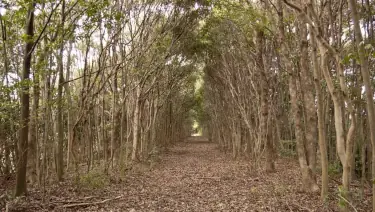
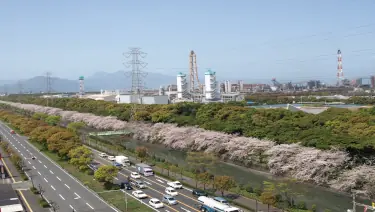
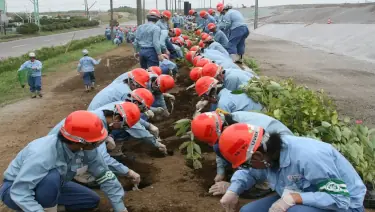
Wildlife at Office and Work Sites
Retention of existing trees and tree plantings at steel work sites help conserve biodiversity.
Wild birds such as bulbuls and eagles gather and animals such as Ezo red fox and deer visit the forests we make and maintain.
Wildlife at Office and Work Sites
| Muroran | Ezo deer, Ezo red fox, Ezo squirrel, eagle, buzzard,magpie |
|---|---|
| Kamaishi | Moon bear, Japanese serow, deer, hare, black-tailed gull |
| Naoetsu | Japanese dace, carp |
| Kashima | Pheasant, shrike, duck |
| Kimitsu | Bulbul, pheasant, little tern, swallow, egret |
| Nagoya | Raccoon, pheasant, bulbul, shrike, swallow, great tit |
| Amagasaki | Heron, bulbul, lizard, killifish, white-tailed skimmer |
| Osaka | Weasel, starling, bulbul |
| Sakai | Duck |
| Wakayama | Raccoon, marten, bulbul, tiger keelbuck |
| Hirohata | Buzzard, shrike, oriental turtle dove, bulbul, starling,bunting |
| Hikari | 51 species of birds including black-tailed gull andherring gull |
| Yawata | Weasel, pheasant, gray heron, Japanese cormorant |
| Kokura | Gull, Japanese wagtail, graphium sarpedon |
| Oita | Whooper swan, kingfisher, killifish, mayfly, firefly |
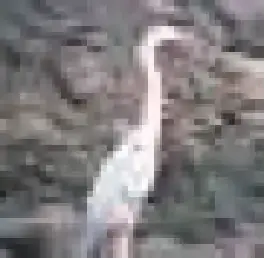
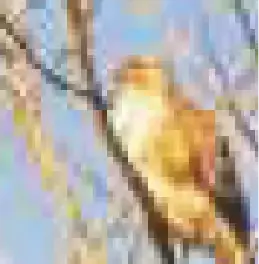


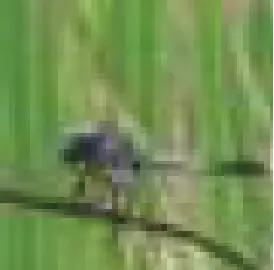
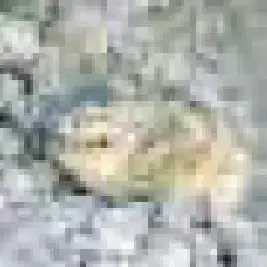

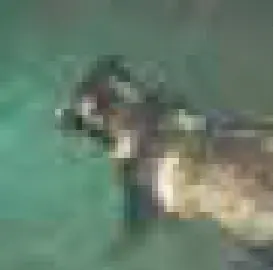
Creation of hometown forests at steelworks rooted in the local community
Participating in the “Company Forest”
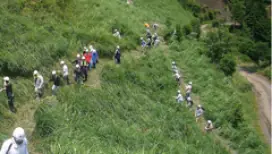
The Kansai Works Wakayama Area is participating in the “Company Forest” program for preservation of forest environments in Wakayama Prefecture. This program involves tree-planting and other volunteer work with the aim of preserving Wakayama's natural environment by maintaining local forests.
At a 2.52 hectare privately-owned forest we have rented in Nakahechi-cho, Tanabe City, for a project named “Nippon Steel Forest” calls for planting and cultivating approximately 5,000 broad-leaf trees. Daily maintenance is entrusted to the Nakahechi-cho Forest Cooperative, while our employees participate in works such as underbrush cutting.
Nippon Steel’s pavement materials, KATAMATM SP made of steel slag, a by-product in the Wakayama Area of the Kansai Works , are used for forest roads in Wakayama Prefecture.
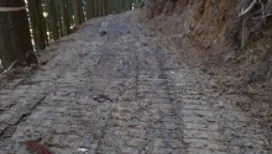
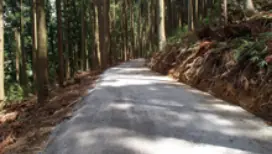
Tree-planting by new employees
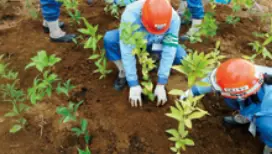
In the Kimitsu Area of the East Nippon Works in Chiba Prefecture, new employees plant trees every year as a part of their environmental education. Several species of evergreen broadleaf trees are planted.
Promoting greenery within a plant in an urban-type steelworks
The Osaka Area of the Kansai Steel Works in Osaka Prefecture is promoting “wall surface greenery” and “roof greenery” in order to contribute to easing the urban heat island phenomenon there and to preserve energy by reducing rises in temperature inside the building.
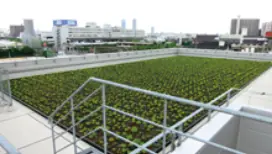
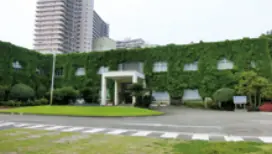
Participating in environmental preservation activities in communities having steelworks
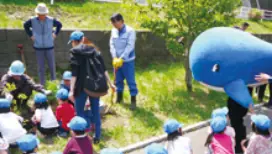
Employees of the Muroran Area of the North Nippon Works in Hokkaido participate in a townspeople’s tree-planting festival hosted by Muroran City, with children, in the city every year.
They are also involved in mowing of weeds and planting of saplings in a 400-meter-long flowerbed within the city.
IGES-Japanese Center for International Study in Ecology
Director Shinichi Suzuki
The Chinju-no-Mori (local historical forest) in the Oita Area, the planting of which began in 1971, is an artificial forest similar to Tokyo’s Meiji-Jingu Shrine forest planted in 1920. However, it is not just a man-made forest. The forest was devised by the late Dr. Akira Miyawaki based on the results of vegetation ecology research, and was created by meticulous planning and management. This has evolved into a Miyawaki-Method environmental conservation forest of evergreen broadleaf trees, and is highly praised globally.
More than 50 years after planting, trees of the local forest in the Oita Area have already reached a height of 20 meters and have flourished so as to become a forest reminiscent of one at the Meiji Shrine. Going beyond the framework of forest greening, the forest project provides excellent scenery and vegetative landscape in the community. At the same time, it comprises a forest area with an impressive overall environmental conservation effect, accompanied by disaster prevention and dust resistance qualities. Unlike single planting of adult trees with props, which was the mainstream back in the 1970s, Nippon Steel’s foresight in environmental conservation incorporating ecological methods is highly praised.
In fact, the site in the Oita Area used to be bare land formed by coastal reclamation before planting to create the current forest. What made it possible to establish the trees was the determination of potential natural vegetation based on field surveys, combined with use of ecological planting of carefully chosen techniques and species, soil improvement, and the creation of mound. Even 50 years after planting, the hometown forest in the Oita Area is still in the process of developing. As a living and continuously growing environmental preservation device, the forest is expected to bring high benefits and contribute to global environmental issues including global warming and biodiversity. The Oita Area hometown forest is precious natural capital.
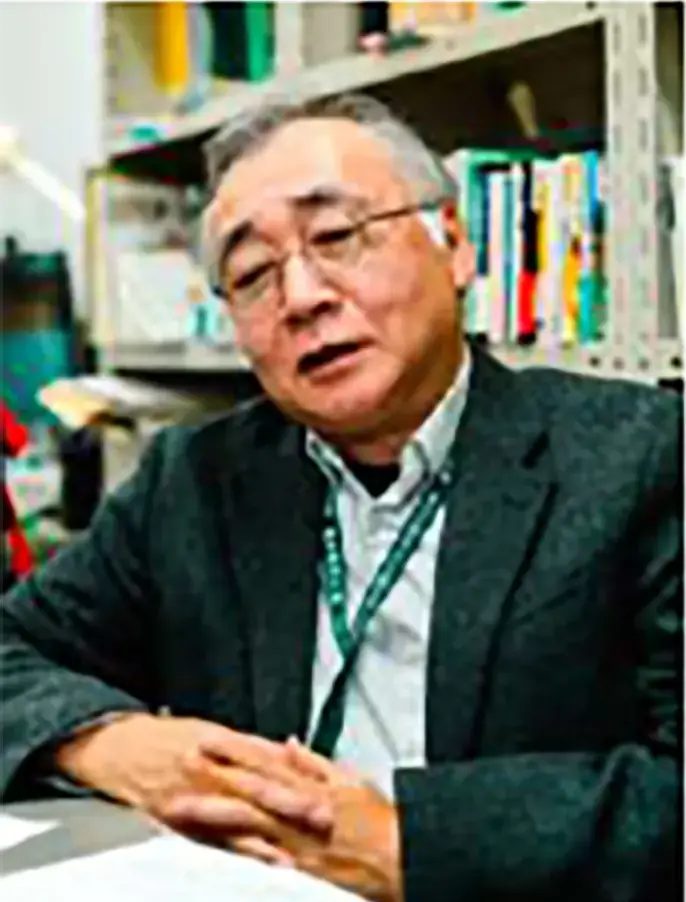
Dr. Shinichi Suzuki
Vegetation Scholar, Director of IGES-Japanese Center for International Study in Ecology (IGESJISE),Ph.D. (Academic)
Born in Gunma Prefecture in 1958. After graduating from the Faculty of Agriculture, at Meiji University, he studied under Dr. Akira Miyawaki at the Vegetation Studies Laboratory of the Research Center for Environmental Sciences, Yokohama National University. He served as a biology teacher at Gunma Prefectural High School, a researcher at the IGES-JISE, and a professor at the Junior College of Tokyo University of Agriculture and the Faculty of Regional Environmental Sciences at the same university. In July 2024, he became Director of the IGES-JISE. He is also a member of the vegetation map legend review committee of the Ministry of the Environment, an advisor to the Environmental Review Board of the Ministry of Economy, Trade and Industry, a special adviser for the protection of Oze, Gunma Prefecture, and the Chairman of Chinju-no-Mori Project Engineering Department.
Co-authored “Nihon Shokuseishi Vol. 3-10” (Shibundo, 1983-1989), “Vegetation Landscape and its Management” (Tokyo University of Agriculture Press, 2014), “Study on Forests That Protect the Environment)” (Kaiseisha, 2018), etc.